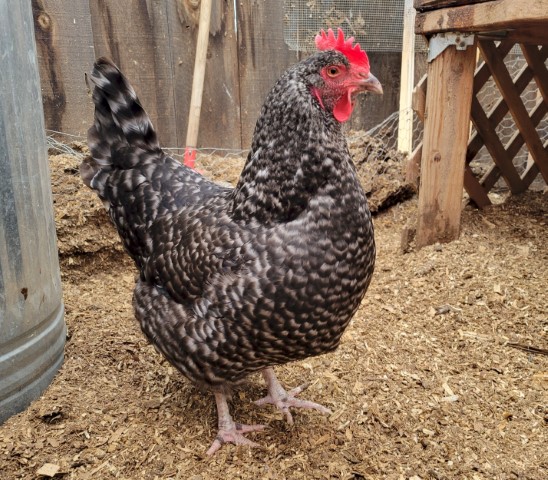Plymouth Rock chickens were developed in New England in the middle of the 19th century as a dual-purpose fowl, meaning that they are valued both for their meat and for the hens' egg-laying ability. The first Plymouth Rock was barred and other varieties were developed later.
Plymouth Rock chickens were first exhibited as a breed in 1849. Several people claimed its invention, using crosses of Dominiques, Black Javas, Cochins, and perhaps Malays and Dorkings. John C. Bennett (1804–1867) has been credited with either creating or popularizing the breed.
Plymouth Rock chickens became popular very rapidly, and until World War II no breed was as popular in the United States as the Barred Plymouth Rock. They became so widely bred because they are an outstanding farm chicken. They are hardy, docile, and excellent at egg production.
The Barred Plymouth Rock was one of the foundation breeds for the broiler industry in the 1920s, and the White Rock continues to be used as the female side of the
commercial broiler cross. The Barred Plymouth Rock is also raised for genetic
hackle used extensively as a material in artificial fly construction.
In 1911,
Francis Peyton Rous, a pathologist working at Rockefeller University in New
York City discovered a retrovirus (called nowadays Rous sarcoma virus)
responsible for chicken neoplasm, characteristic for that breed. This discovery
brought him a Nobel Prize in Physiology or Medicine in 1966.
